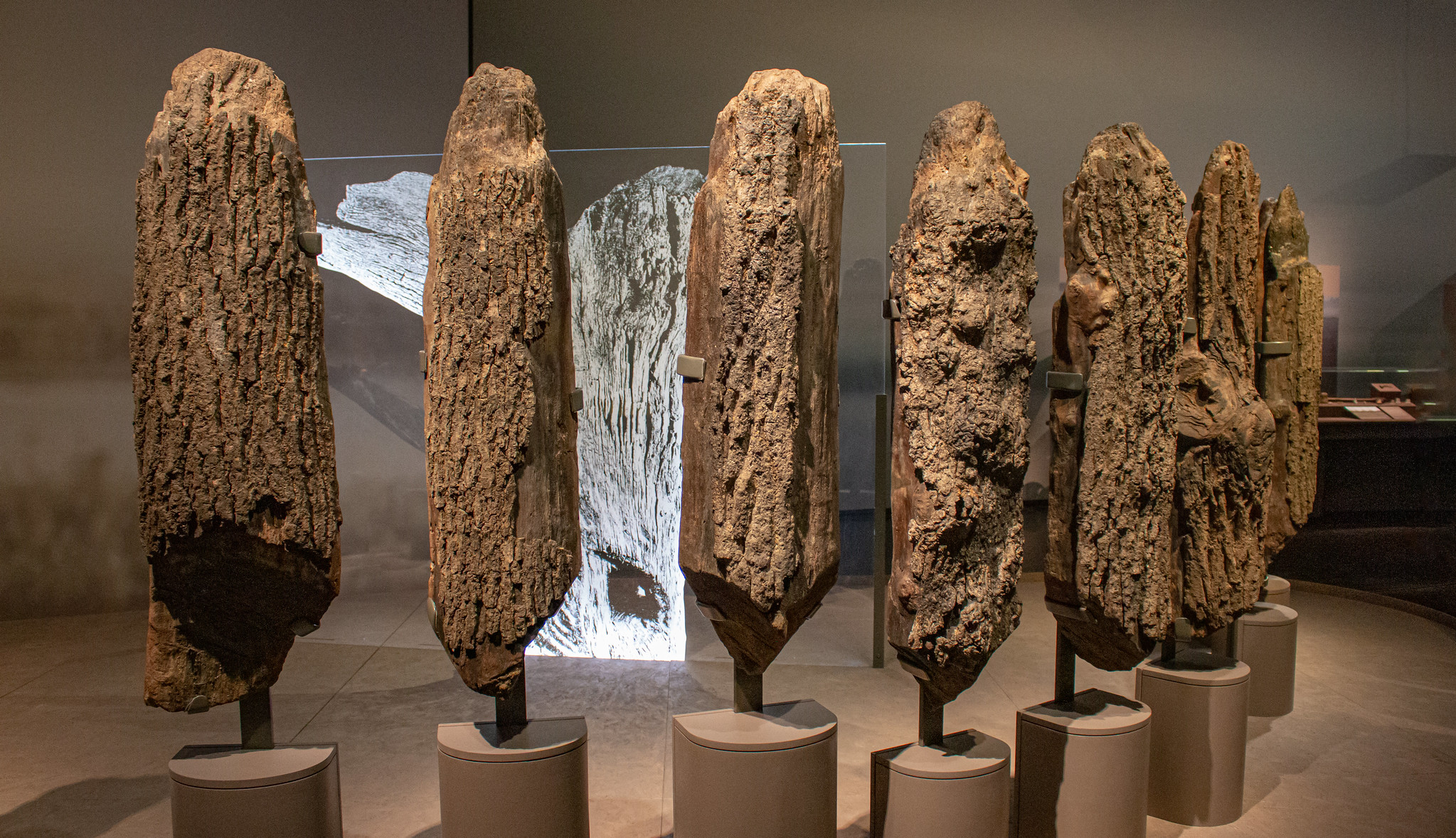Everyone knows about the stacked rocks of Stonehenge in South West England, but on the country’s east coast, there’s another prehistoric monument that’s no less fascinating. Known as Seahenge, a researcher has re-investigated why the mysterious structure was built over 4,000 years ago.
Seahenge, also known as Holme I, was only discovered in 1998 when shifting sands revealed the monument along a beach in the village of Holme-next-the-Sea, north Norfolk. It consisted of 55 half-split oak trunks set in an oval shape measuring 7 by 6 meters (23 by 20 feet). In the center, a larger upturned oak stump had been placed in a pit.
Just 100 meters (328 feet) away, another similar structure was found, known as Holme II. The tree rings found at both structures suggest they were built at the same time around 2049 BCE – a few hundred years after the iconic sarsen stones were placed at Stonehenge around 250 kilometers (155 miles) away.
It has previously been suggested that the dual structures were created to mark the death of a prominent individual, such as a warrior or a local chieftain, while others have speculated they were used for sky burials, where the bodies of the dead would be placed inside to be pecked and carried away by carrion-eating birds.
In a new study, Dr David Nance from the University of Aberdeen puts forward another theory using a combination of climatic and environmental data, astronomic and biological evidence, and regional folklore.
He argues that Holme I was constructed during a bitterly cold climatic period, perhaps for rituals intended to summon the return of warm weather.
“Dating of the Seahenge timbers showed they were felled in the spring, and it was considered most probable that these timbers were aligned with sunrise on the summer solstice,” Dr Nance, a researcher at the University of Aberdeen’s Department of Geography and Environment, said in a statement.

Holme I on display at the British Museum as part of their World of Stonehenge exhibition.
“We know that the period in which they were constructed 4,000 years ago was a prolonged period of decreased atmospheric temperatures and severe winters and late springs placing these early coastal societies under stress,” he added.
While both monuments were built to ward off this existential threat, he believes they had slightly different roles. Holme I, he argues, was designed to resemble the bird “cage” described in folklore, intended to keep an unfledged cuckoo singing and thus prolong the summer.
“Summer solstice was the date when according to folklore the cuckoo, symbolising fertility, traditionally stopped singing, returned to the Otherworld and the summer went with it,” Dr Nance added.
“The monument’s form appears to imitate two supposed winter dwellings of the cuckoo remembered in folklore: a hollow tree or ‘the bowers of the Otherworld’ represented by the upturned oak-stump at its centre. This ritual is remembered in the ‘myth of the pent cuckoo’ where an unfledged cuckoo was placed into a thorn bush and the bird was ‘walled-in’ to extend the summer but it always flew away,” he explained.
Meanwhile, Holmes II was created as a burial mound. Nance points to evidence that shows “sacred kings” of Iron Age Ireland and Britain were sacrificed if misfortune fell on the community in an attempt to appease the goddess of Venus. Against the backdrop of harsh winters and hard times, the local king offered himself to the god and was laid to rest here, Nance proposes.
“Evidence suggests that they were ritually-sacrificed every eight years at Samhain (now Halloween) coincident with the eight-year cycle of Venus. The fixtures in Holme II that were thought to hold a coffin, are orientated towards sunrise on Samhain in 2049 when Venus was still visible,” he noted.
The new study is published in GeoJournal.
Source Link: Forget Stonehenge, Why Was "Seahenge" Built Over 4,000 Years Ago?